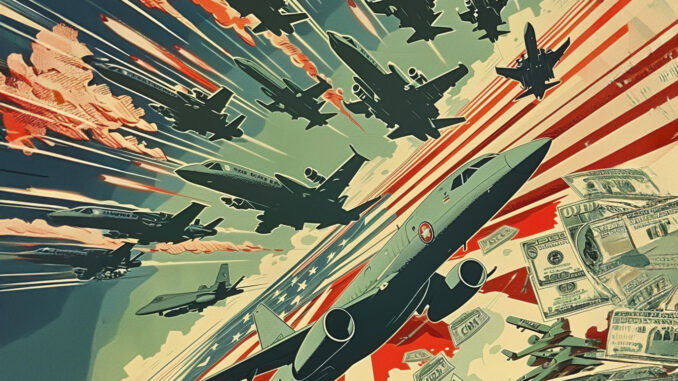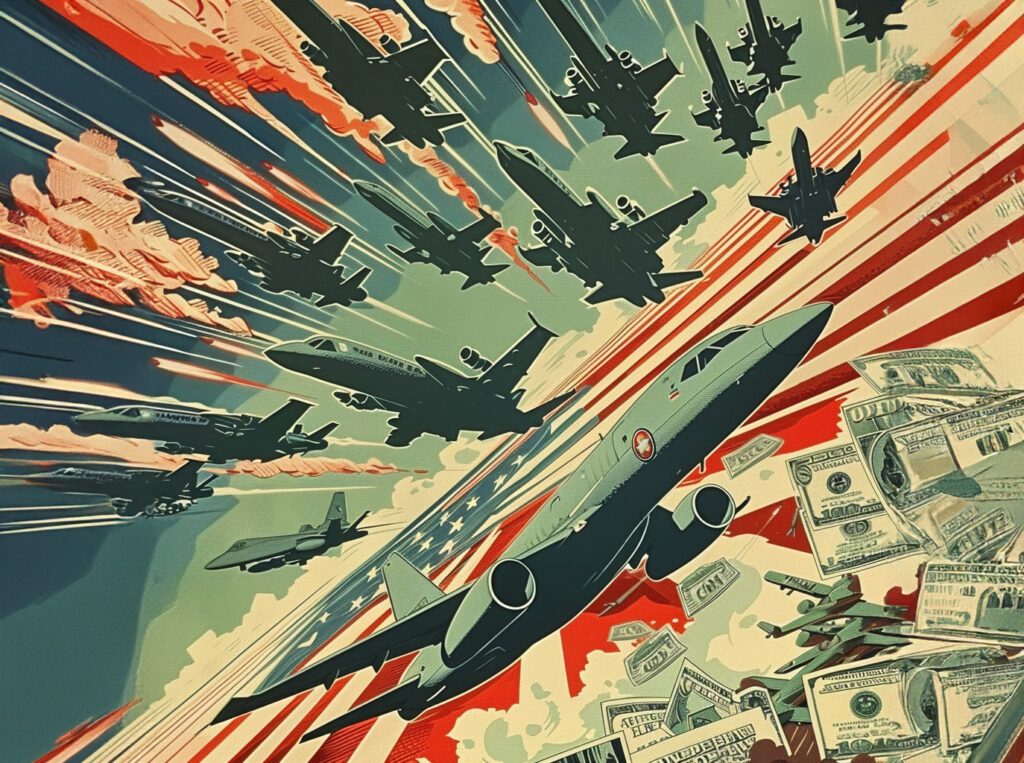
In 2023, global military spending reached 2443 billion dollars, marking an increase of 6.8% compared to 2022, according to SIPRI.
To summarise
World military spending reached 2443 billion dollars in 2023, an increase of 6.8% on the previous year. This increase, the largest since 2009, is due to escalating geopolitical tensions and regional conflicts. The United States, China and Russia remain the biggest spenders, while all regions of the world, including Europe, Asia and the Middle East, have seen their military spending increase significantly.
Detailed analysis of global military spending in 2023
Global increase in military spending
In 2023, global military spending reached an all-time high of 2443 billion dollars, representing an increase of 6.8% compared to 2022. This increase is the largest since 2009 and reflects a continuous trend of increasing military budgets over nine consecutive years. The global military burden, i.e. military spending as a percentage of global GDP, has risen to 2.3% in 2023, while average military spending per capita has reached $306.
This growth is mainly attributed to persistent conflicts in Ukraine, escalating geopolitical tensions in Asia and Oceania, and tensions in the Middle East. Military spending increased in all geographical regions defined by SIPRI, with particularly significant increases in Europe, Asia and Oceania, and the Middle East.
Top spenders
The ten biggest military spenders in 2023 were the United States, China, Russia, India, Saudi Arabia, the United Kingdom, Germany, France, Japan and South Korea. These countries have all increased their military spending. The United States remains the biggest spender with a budget of 916 billion dollars, which represents 68% of total NATO military spending and 37.5% of total world spending. China, with an allocation of 296 billion dollars, has increased its budget by 6% compared with 2022, continuing a trend of continuous growth over the last 29 years.
The situation in Europe and the impact of the war in Ukraine
Europe has seen a significant increase in military spending, largely in response to the war in Ukraine. Russia has increased its military spending by 24% to $109 billion by 2023. Since the annexation of Crimea in 2014, Russian military spending has increased by 57%. In parallel, Ukraine spent $64.8 billion in 2023, an increase of 51% on 2022 and 58% of total Ukrainian government spending. International military aid, mainly from the United States, has made a significant contribution to Ukraine’s military capabilities.
Military spending in Asia and Oceania
Geopolitical tensions in Asia, particularly linked to China’s military expansion, have led to an increase in military spending in the region. China, the world’s second largest military spender, allocated 296 billion dollars to its army, an increase of 6% on the previous year. Japan and Taiwan also increased their military budgets by 11% in response to China’s growing power.
The Middle East and regional conflicts
The Middle East has seen the biggest increase in military spending for a decade, rising by 9% to reach $200 billion in 2023. Israel’s military spending increased by 24% to $27.5 billion, mainly in response to the Gaza offensive in October 2023. Saudi Arabia remains the biggest spender in the region.

Consequences of increased military spending
Risk of conflict escalation
The increase in military spending around the world poses an increased risk of conflict escalation. Massive investment in military arsenals can lead to an arms race, increasing tensions and the likelihood of armed conflict. The example of China and its neighbours shows how the military spending of one country can encourage others to increase their spending as well, creating a cycle of regional militarisation.
Impact on national budgets
Military spending accounts for a significant proportion of national budgets, which can divert resources from critical sectors such as education, health and infrastructure. In Ukraine, for example, 58% of total government spending was allocated to defence in 2023. Similarly, Russia devotes 5.9% of its GDP to defence, demonstrating the enormous financial weight of military spending on national economies.
Implications for international peace and security
The increase in global military spending reflects a deterioration in international relations and growing mistrust between nations. This climate of suspicion and military preparedness can undermine efforts at peace and diplomacy, making it more difficult to resolve conflicts peacefully. There is a high risk of an action-reaction spiral, where every increase in military capability by one country provokes a similar response from its rivals.
SIPRI data on global military spending in 2023 shows a significant increase in military budgets against a backdrop of rising geopolitical tensions. The United States, China and Russia remain the biggest spenders, while all regions of the world have seen their spending increase. This situation poses significant challenges to international peace and security, highlighting the need for disarmament and arms control measures to prevent the escalation of conflicts. For more details, the full SIPRI report is available on their official website.
War Wings Daily is an independant magazine.